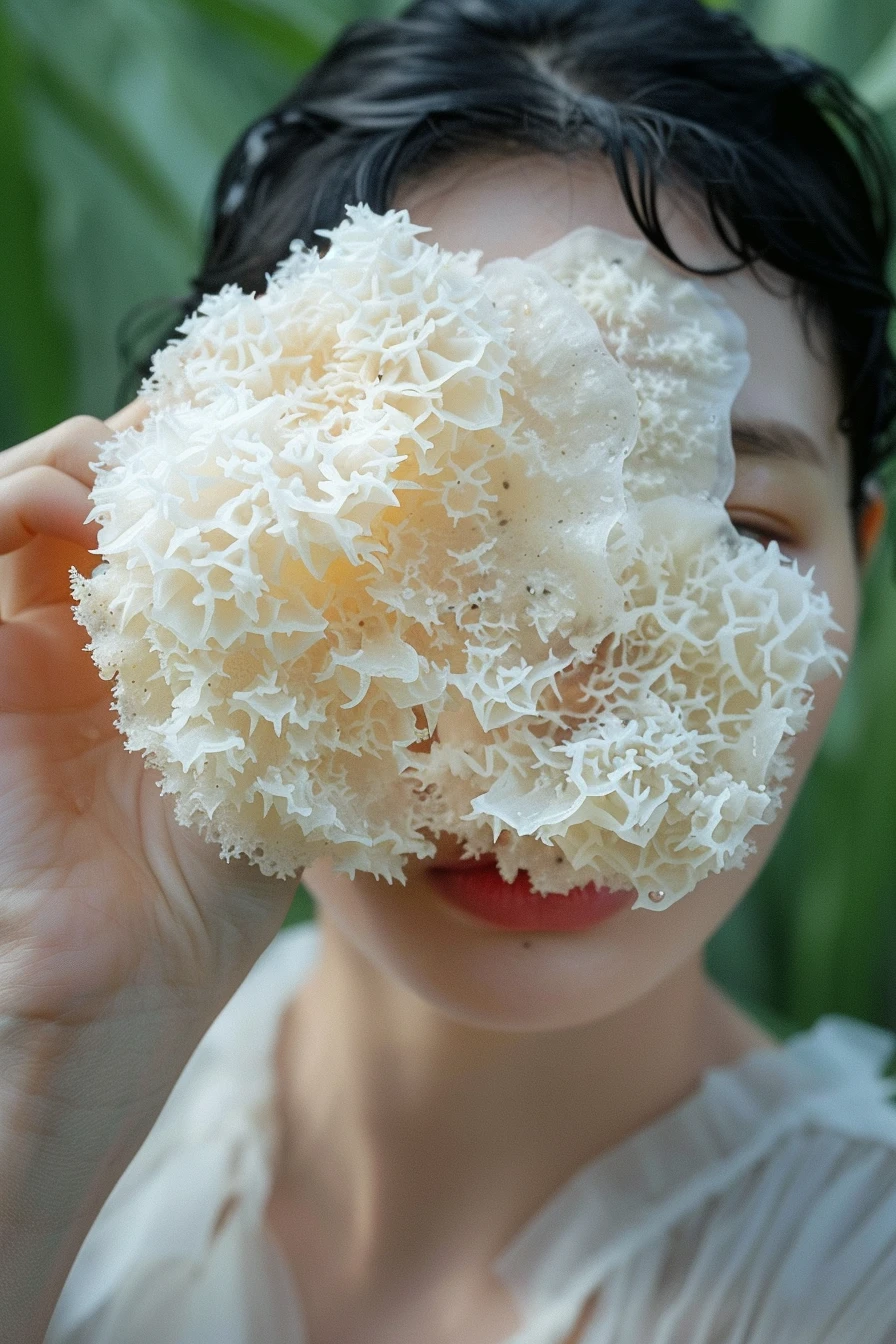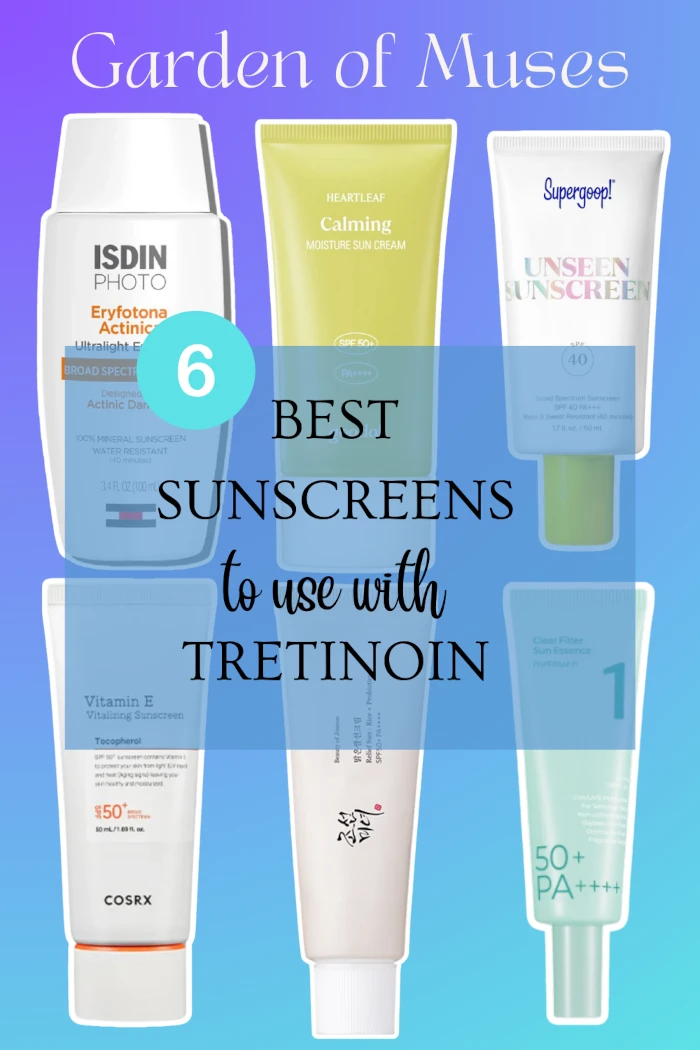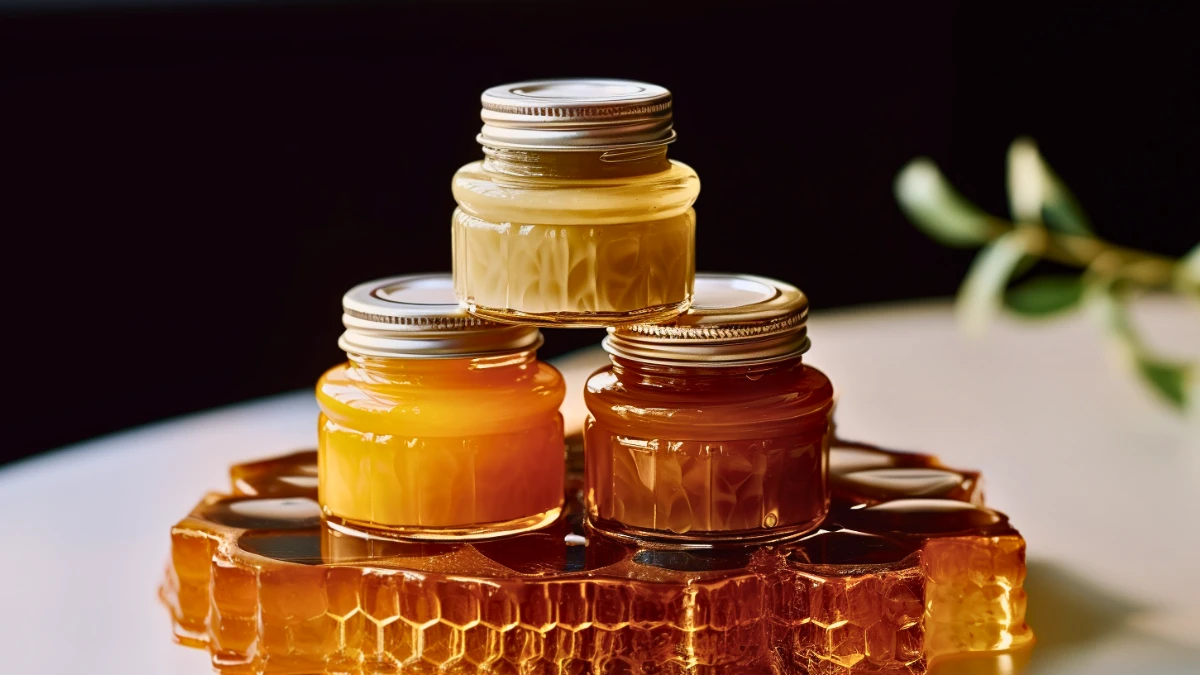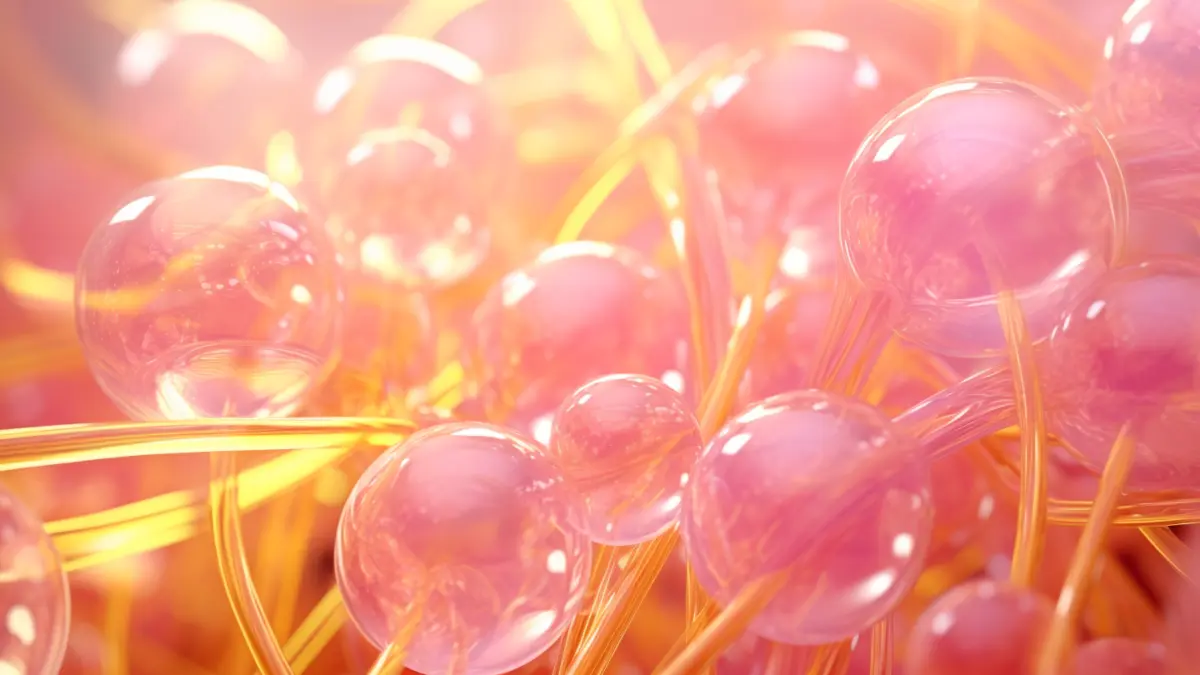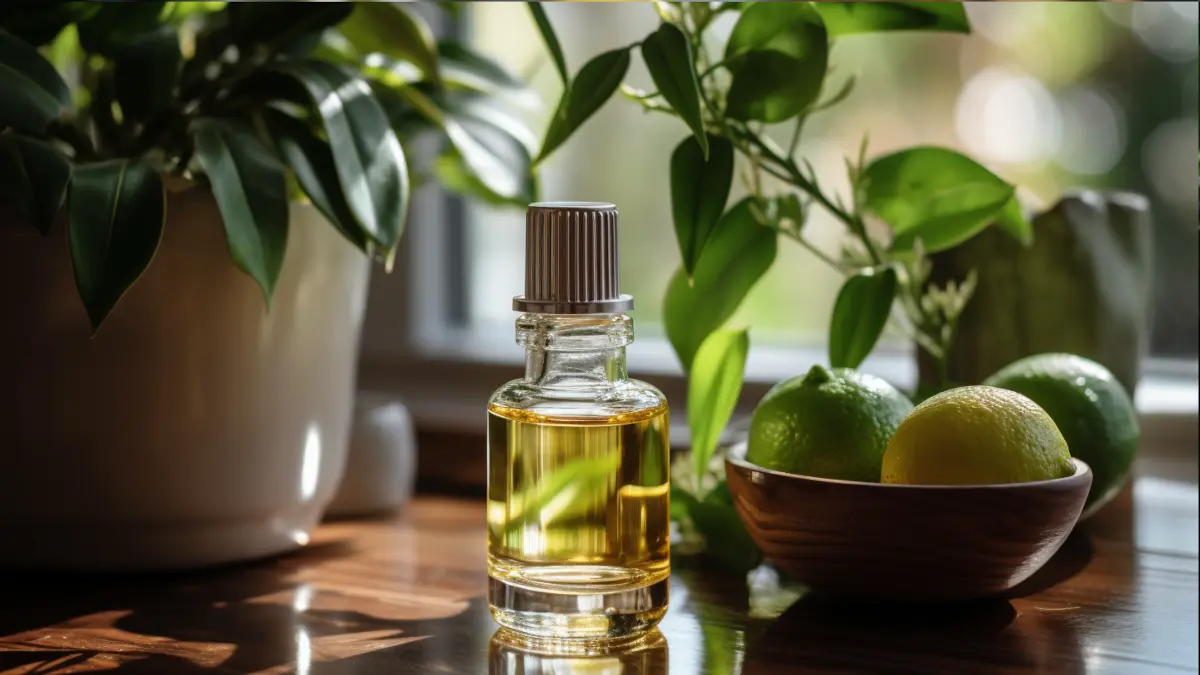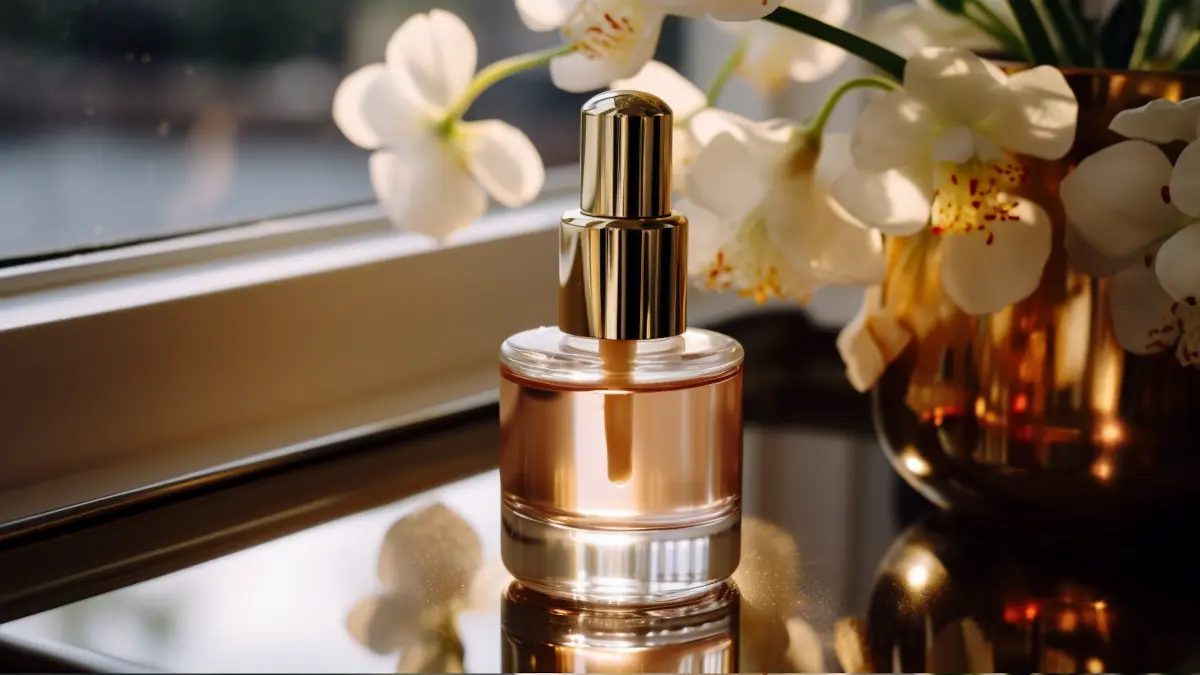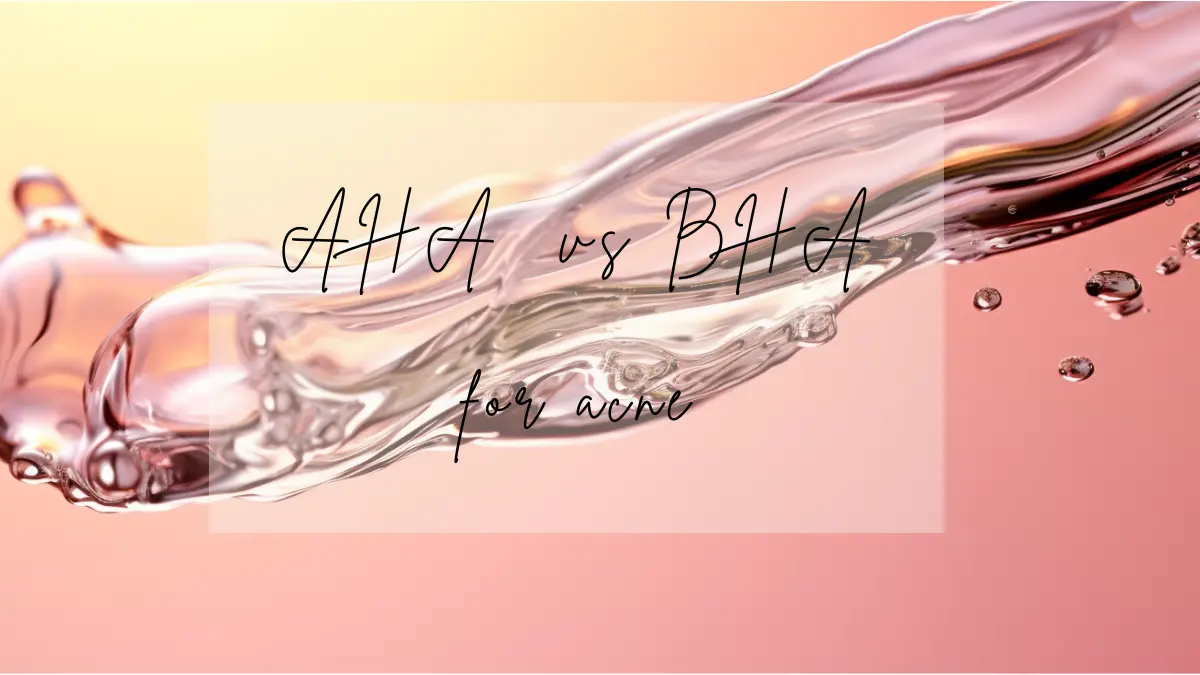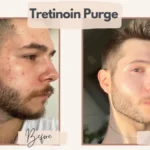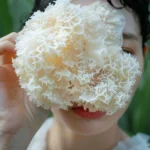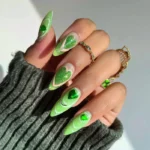Picture this: you’ve been taking excellent care of your skin and love how it looks and feels. You recently purchased an exfoliating serum everyone’s raving about on social media. But within a week or so, your skin seems to have turned on you, like it’s ANGRY. Maybe it’s burning, itchy, really dry, and flaky. Your face feels tight constantly, but not in a good way, like you just had a facelift more like as if your face could crack at any second. Oops, you have damaged your skin barrier!
I’ve been there, don’t worry, it can be fixed. Some of us over-exfoliate, and some like to dive into the biggest strength of tretinoin. I see it all the time.
In all my years as a product-hoarding skincare junkie… the unthinkable had finally happened to me. Something I tried backfired. The worst part is that I think I know which product it was, but I cannot be sure because I love trying new things and sometimes will overexcitedly swap out products all willy-nilly when I get new ones. In this particular case, I had added three newbies to a couple of days’ routine, and any one of them could have mutinied.
I don’t have reactive skin, mind you. I’ve trained my skin in the arena of every kind of facial acid you can think of probably and now it is strong like bull. My skin is normal to dry-normal depending on the season, but overall is pretty well-behaved and has been ever since I started taking care of it in a very mindful and serious way.
Anyway, the product (or multiple/combo of products?) that jacked up my barrier did so after about two to three days — it wasn’t an immediate scourge, which is unusual, right? Rather than break out in zits or a burny redness, my skin texture became crazy congested-feeling as if there was one of those egg crate mattress pads underneath — it was as if my skin was trying to keratin itself a protective shell against the offending luxury skin care product. I didn’t think too much of it until, without warning it also broke out all along my lower face in both actual breakouts and flaky patches. Fun! Just throw it all on there, why don’t you?
So following logical suite, I freaked out. I stopped using anything new that I had added in the last week, ceased all chemical exfoliants (for fear of further irritation) and used only the most gentle products made for sensitive skin (that I had previously scoffed at) I had in my apothecary. It stung to even put on moisturizer. No bueno. Until my skin returned to its semi-normal texture of “relatively smooth and plump,” I lined up the offending products on my desk to accusatorially scowl at them in a How dare you? sort of way, vowing to suss out who did this to me? once my skin had completely healed.
I like playing with new products and have sensitive skin. I mean, what’s a girl to do, you know?
The most crucial rule in skincare is: Take care of your skin barrier! Damage to the skin barrier causes or worsens most of your skin’s problems. But, first:
How to Repair Your Skin Barrier:
What Is the Skin Barrier?
One of the most important jobs of the skin is protection. Think about it — how amazing is it that this thin, flexible material we call skin allows us to walk around in a world full of toxins, parasites, and bacteria and LIVE through it? It’s all thanks to an amazing blend of enzymes, oil, acid and water that is secreted by our skin. Because this secretion is slightly acidic, we call it the acid mantle, otherwise known as the “barrier.” Consequently, talk about repairing the skin barrier has frequently appeared recently.
The skin comprises three main layers: the epidermis, dermis, and hypodermis. Each has several sublayers, most of which perform unique, specialized functions.
The outermost part of the epidermis is the stratum corneum or the skin’s protective barrier.
The stratum corneum comprises keratin-filled skin cells called corneocytes that overlap like bricks in a wall. This wall’s intercellular “cement” consists of lipids, including ceramides, lipids, and fatty acids that hold it all together.
Ceramides, cholesterol, fatty acids, urea, PCA, lactic acid, and amino acids are called the skin’s “natural moisturizing factor” (NMF) because they help keep the deeper layers of skin hydrated and nourished.
What’s the Skin Barrier’s Purpose?
An optimally-functioning moisture barrier physically protects the dermis against viruses, bacteria, and ubiquitous chemicals and water loss from the epidermis.
A damaged skin barrier resembles an open wound, into which bacteria and contaminants can enter and wreak havoc. It will contribute to inflammation and pathogenic conditions such as irritation, eczema, peeling, redness, acne, allergies, and atopic dermatitis.
Prioritizing moisture barrier health is also of utmost importance to anyone seeking to lessen the signs of aging. A breached barrier will result in the escape of water from the epidermis and drying, which will affect its firmness and appearance. Dehydrated skin speeds up the skin’s aging process.
Ceramides are primarily responsible for the tightness of the barrier. Their loss will facilitate the penetration of microorganisms and the escape of water from the epidermis.
Fatty acids are responsible for maintaining the appropriate pH of the skin. Their deficiency leads to skin hypersensitivity to external factors and allergens and increases transepidermal water leakage (TEWL). Particularly noteworthy are the essential unsaturated fatty acids (EFAs), belonging to the polyunsaturated higher fatty acids (PUFA). For the proper functioning of the skin, three acids are necessary: linoleic (LA), alpha-linolenic (ALA), and gamma-linolenic (GLA). Our bodies do not synthesize the first two, so we must provide them with food or cosmetics. GLA can be made in the skin from linolenic acid. Still, the amount of enzymes needed for this process declines with age, so it is often deficient. It has been scientifically proven that the reduced level of EFAs in the skin leads to dryness, dehydration, and many skin problems. Linoleic acid and gamma-linolenic acid deficiency has been found in people with atopic dermatitis, psoriasis, and adolescent acne.
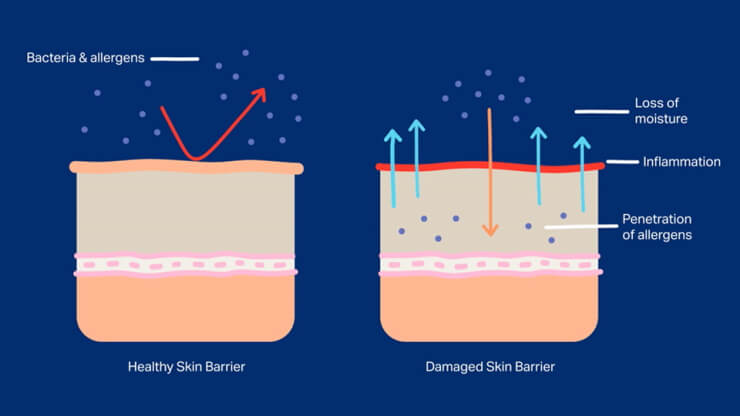
Damaged Skin Barrier Signs
Many skin conditions, including dry skin, breakouts, eczema, psoriasis, etc., are influenced by barrier health. We now know that many people suffering from acne have an acid mantle that isn’t quite as acidic as people without acne, which plays a part in why their skin is more susceptible to bacteria growth (i.e., acne). Also, some newer research has found that people with skin diseases related to malfunctioning barriers (psoriasis, eczema) are genetically deficient in a protein that helps the skin heal, close the barrier, and retain moisture. So barrier health is pretty much always part of the problem regarding skin issues. In other words, dry skin is a sign of a compromised barrier, although a compromised barrier may not always express itself as dry skin.

Common signs of a damaged skin barrier are:
- Inflammation
- Increased sensitivity
- Itching
- Burning
- Redness
- Acne. Your breakouts aren’t getting better or are worsening. When your skin’s barrier has been broken down, bacteria are allowed in, turning your face into a breeding ground for pimples.
- Atopy
- Rough skin, peeling, and flaking. Another side effect is your skin losing the ability to retain water. Any moisture being applied is escaping because the acid mantle is destroyed. The result is a rough texture, leaving you to believe you need to exfoliate more and that the last thing you should be doing.
- Dryness Do you feel like you can’t smile without your face cracking? Maybe more so after cleansing? When your skin has been stripped of its natural oils, it loses its natural lubrication. Every skin type can experience a lack of oil, whether dry or oily, and become tight and uncomfortable.
- Dehydration. Dehydration can manifest as dry or rough skin, but a tall tale sign is the sudden appearance of wrinkles. If your eyes suddenly appear crepey or your expression lines are more significant, your skin is thirsty. So don’t go running for Botox yet!
These are signs your barrier, the layer that protects your skin from irritants and allergens, is compromised. Skin in this state is prone to contact dermatitis.
Although some of these problems also have other causes, such as genetics, they all require rebuilding the skin’s moisture barrier and strengthening the stratum corneum to fight against unwanted symptoms effectively.
A healthy skin barrier function is vital for a firm, smooth, and even complexion.
What Causes Skin Barrier Damage?
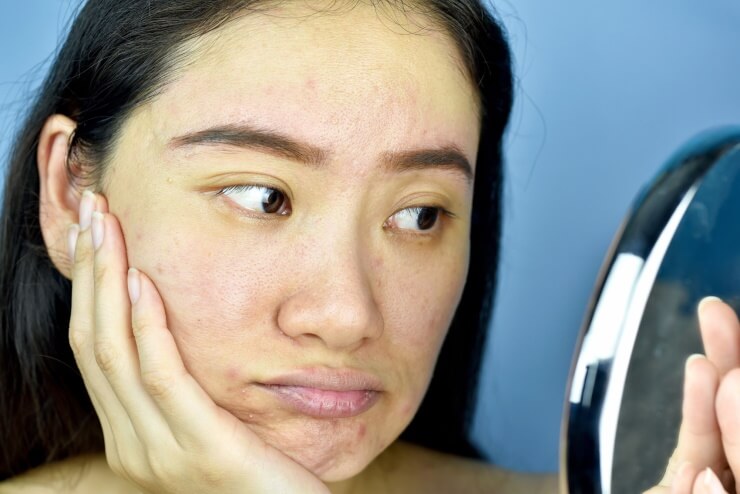
Some general practices have the potential to impair a barrier.
Genetics
Some of it is due to genetics, with some people naturally having weaker moisture barriers. If a person has a history of dermatitis in their family, they have a higher risk for eczema, which is one condition that causes a naturally weak moisture barrier.
Inappropriate skincare
Astringent or Alkaline Cleansers
Because your barrier needs to maintain an acidic pH to work correctly (healthy skin lives at a pH of around 5.5), too alkaline products are not a good idea. The biggest offenders are cleansers. Cleansers too high on the pH scale can weaken the moisture barrier. Even today, many brands are formulating alkaline cleansers. We still see so many alkaline cleansers on the market because they give that “squeaky clean” feeling that people think they like. That “fresh and tight” feeling is your barrier being stripped and screaming for help. Imagine you’re in the Alaskan hinterland, and all your clothing is suddenly ripped off. You would scream too.
So use a pH-balanced cleanser. After cleansing, even with only water, the skin’s pH increases. If our skin lacks fatty acids, this condition can last several hours. To adjust your skin ph after cleansing, use a pH-adjusting toner, such as Cosrx AHA/BHA Clarifying Treatment Toner.
Ceramides are particularly sensitive to high pH; therefore, I am amazed how many people completely ignore the pH issue in caring for and reconstructing their moisture barrier. This is a vital issue.
Too many actives
You can also impair your barrier by “overworking” it. Strong actives such as Tretinoin are common culprits of skin barrier disruption. This includes using too many active products and neglecting to support the oil/water balance in the skin. Now that retinoids and exfoliation loom large in the consumer’s mind, many people impair their barrier because they have too many or the wrong exfoliating products. Boosting cell turnover is excellent, but if your skin is inflamed, feels tight, or is “raw,” it’s time to back off.
Mechanical abrasion
Other common culprits are scrubs and rough skin habits. Grainy skin scrubs are fine for people with thick skin, but most people’s skin can’t handle facial scrubs. This includes those ever-popular Clarisonic brushes, which can be fine when used once or twice a week, but most people use them too often. Besides, you can get better resurfacing from an AHA or BHA.
How you dry your face is also essential. Experienced estheticians can look at a person’s skin and tell if they rub their face with a towel after cleansing. ALWAYS pat dry.
Not Moisturizing
Not applying a moisturizer after cleansing.
Environmental factors
Spending much time outdoors is healthy but does not make your barrier happy. Excessive sun exposure, too high or too low temperatures, wind, pollution, and diseases can also wreak havoc on the moisture barrier.
Skin aging
Everyone needs to keep their barrier in good shape. However, older skin has to be a wee bit more careful. Aging skin is much thinner and slower to heal, so it needs constant barrier maintenance. Healing a severely impaired barrier in older skin can take months.
How to Protect the Skin’s Barrier?

Firstly, do no harm. Meaning: limit everything that damages it.
Secondly, provide it with all the substances that replenish it. Restoring the proper pH is also essential, which most people fail to mention when addressing the skin’s moisture barrier.
- Throw away anything that mechanically rubs the skin—starting with sonic brushes and physical exfoliation and ending with cotton pads. Be careful when using towels and cloths to dry your face, as they irritate your skin further. Dry it gently using soft materials.
- Use chemical exfoliation and avoid physical scrubbing.
- Do not use soaps or washing gels containing strong detergents such as SLES, SLS, and their derivatives.
- Do not use cosmetics with alcohol. It is an irritant. It can cause skin dryness and damage the skin barrier in high enough doses. Find them in the ingredients list as Alcohol, Ethanol, Alcohol Denat, and Isopropyl Alcohol.
- Restore the skin’s proper pH after washing the face. Use hydrating and soothing toners.
- Choose products that contain ceramides, cholesterol, and omega 3 and 6 fatty acids to strengthen the barrier in the stratum corneum. You will find them in natural oils such as black seed oil, evening primrose oil, hemp oil, sea buckthorn oil, and borage oil.
- Add ingredients in the hydro-lipid barrier, i.e., urea, lactic acid, triglycerides, and squalane.
- Use humectants that bind water in the epidermis. Humectants that are part of the NMF (urea, sodium PCA) or are very similar to it, such as trehalose, will work well.
- Use emollients to prevent excessive water loss from the epidermis. Choose emollients that are not very occlusive – avoid paraffin;
- Choose foods rich in antioxidants;
- Use a broad-spectrum sunscreen;
- Protect your skin from cold and hot air.
You already know the rules, but how do you put them into practice? I will introduce two concepts to make it easier: repairing and strengthening.
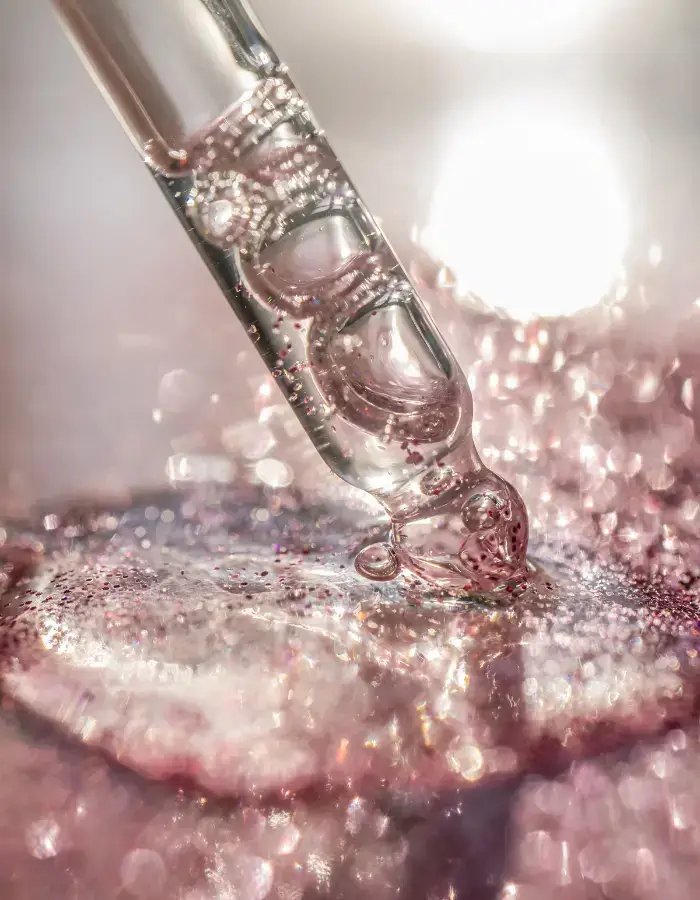
How to Strengthen the Skin Barrier?
Hydrate
This depends, of course, on what the skin is lacking. The barrier is a combo of water and lipids. For people with healthy oil production, this means looking for humectants on the ingredient list (preferably in the top five ingredients): glycerin, sodium hyaluronate or hyaluronic acid, lactic acid (low concentrations), aloe vera, etc. In the drier winter weather, water loss becomes an issue for everyone. Adding a hyaluronic serum or doing a hydrating sheet mask once or twice a week is helpful.
Moisturize
Drier skin types may need water and oil found in various plant oils or ingredients like squalane (which is not technically an oil). Also essential are other lipids found in our skin barrier, like ceramides, fatty acids, and cholesterol. Silicones can also be helpful since they provide a breathable barrier for the skin, which can be imperative with a severely compromised barrier.
Strengthening the moisture barrier does not mean you must give up actives forever. But, repairing and rebuilding the skin’s barrier before using them is crucial. Introduce new ingredients one at a time and watch your skin react. Especially when using retinoids or acids, if your skin becomes dry, red, tight, itchy, or stinging, hydrate and moisturize it intensely. Please wait a few days before the skin regains balance, then reach for products that repair the skin barrier.
How to Repair the Skin Barrier?
The process of repairing the moisture barrier takes time. It is best to focus on the skin’s barrier repair for at least 30 days to improve the skin’s condition.
Keep it Simple
The 10-step routine isn’t for everyone. Some skin types can get by on toner, serum, and SPF alone. And even if your skin is drier and needs more, look for richer products that impart the benefits you need rather than layering on more.
pH Is Key
Alkaline cleansers are so 2016. Please leave them in the past where they belong and reach for a cleanser with a pH ranging between 4.5 and 6.0, which is closer to your skin’s natural levels. Alkaline cleansers will further strip your skin of moisture, worsening the problem.
Think Juicy, Nourishing Products
Provide the skin with only those ingredients in the stratum corneum and the skin’s lipid layer. Each ingredient plays a specific role in the skin and affects the others.
Ceramides are naturally present in high concentrations in your skin’s outermost layer and are depleted when your barrier is compromised. Logic follows that replenishing them will restore skin health, so look for this essential lipid in the formulations you favor.
However, ceramides are extremely sensitive to high pH. Their amount depends on the appropriate level of fatty acids responsible for regulating the pH. Ceramides also depend on the amount of squalene in the skin because it has antioxidant properties and prevents fatty acid oxidation. This simple example shows that to rebuild the skin’s barrier, we must not focus on a single ingredient but must act holistically.
Recommended products must contain a combination of ceramides, fatty acids, cholesterol, squalane, and antioxidants.
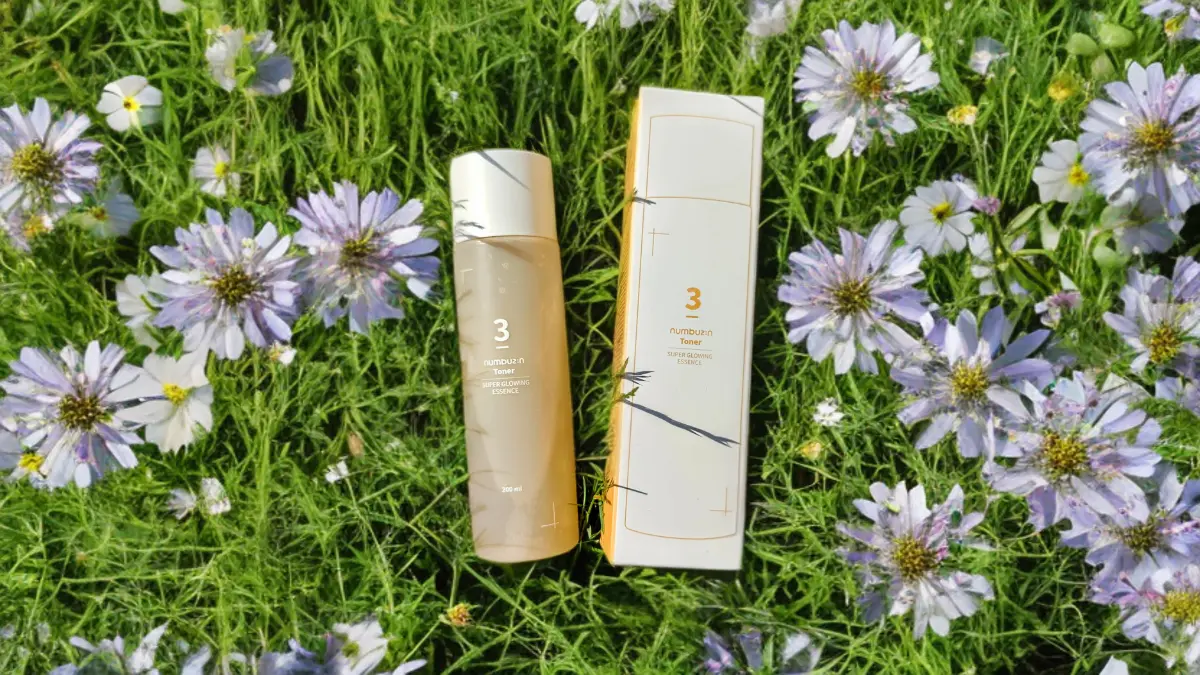
(*affiliate links)
Feed the Microbiome
Studies have found that colonizing microbiota is crucial to the skin’s barrier function. The skin microbiota is composed of bacteria, fungi, archaea, viruses, and mites and provides protection against pathogens, tunes immune responses, and fortifies the epithelium. To nurture your skin microbiome, you can add fermented products to your skincare routine. The vitamins and antioxidants created during fermentation help strengthen the skin’s moisture barrier.
Pack on the Moisture
In addition to ceramides, seek humectants like hyaluronic acid and glycerin to attract moisture and occlusives to seal it in. This trifecta will reduce water loss and hold in moisture, which will ultimately improve barrier function.
Catch Some Zzzs
Yes, sleep is an essential factor when it comes to restoring your moisture barrier. This is because your skin naturally repairs itself while you slumber. A study found that people with better sleep quality had 30 percent less transepidermal water loss than chronically poor sleepers. So, tuck yourself in tight and let the healing begin.
Grab Some H2O
Hydrate your skin from the inside while the skincare products work their magic topically. Water is essential to optimally functioning organs, of which the skin is the largest. The more you drink, the better for you and your body.
Step away from those exfoliants
Your skin’s just taken a beating and needs all the TLC it can get. Cell turnover is essential, but it can wait until another time, preferably after your skin has rested and recovered from its trauma.
Eat This, Not That
Reach for food rich in essential fatty acids, vitamins, and minerals like salmon, tuna, beans, sweet potatoes, and flaxseed, boosting collagen production and speeding up the repair process.
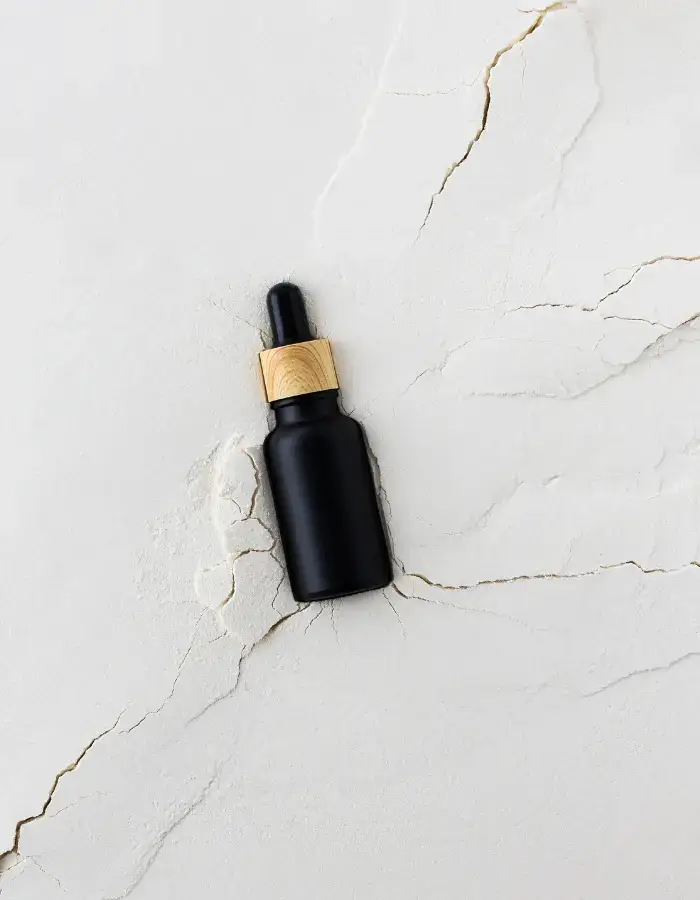
Best Ingredients for Skin Barrier Repair
The ingredients that work best for restoring the skin’s barrier are those naturally contained in the skin composition. Among them are ceramides, fatty acids, squalane, urea, lactic acid, cholesterol, triglycerides, sodium pyroglutamic acid, and substances similar to NMF.
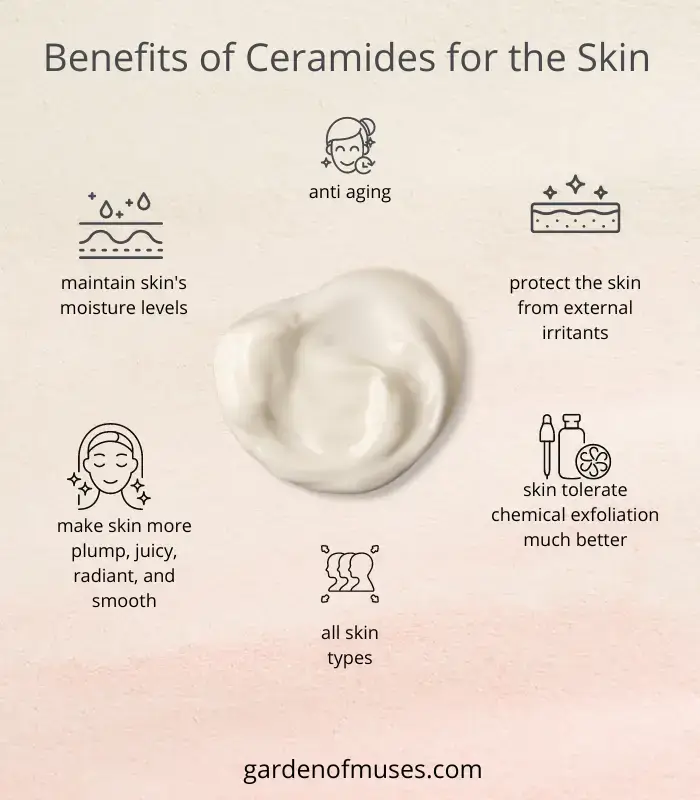
1. Ceramides
Ceramides are a family of lipids that account for 50% of the skin barrier (by weight), so they’re essential, right? Ceramides are crucial to:
- maintain the skin’s moisture levels;
- protect skin from external irritants making skin more resilient;
- help make skin more plump, juicy, radiant, and smooth;
- makes skin tolerate chemical exfoliation much better;
- skin is less likely to become irritated;
- because they prevent dehydration, ceramides are a great anti-aging ingredient;
- regulate the cell cycle and apoptosis (regulated cell death);
- beneficial for all skin types.
Heralded as skincare heroes, ceramides can now be found in cleansers, toners, serums, masks, moisturizers, and even hand creams.
2. Oils
A deficiency of unsaturated fatty acids is a common cause of disturbed skin barrier, so reach for those cold-pressed oils that contain them.
Below are quick-drying, non-comedogenic oils high in the three most essential fatty acids. It’s also a good idea to replenish your skin’s squalene levels as they decline with age. In rebuilding the skin’s protective barrier, I especially recommend the following:
Best oils for skin barrier repair
Squalane – squalene that occurs in our skin is unstable. It quickly oxidizes, so buying a vegetable equivalent, such as squalane from sugar cane or olive oil is worth it.
Black currant oil – contains high concentrations of alpha-linolenic acid and gamma-linolenic acid. Black currant seeds are also rich in proanthocyanidins. These powerful antioxidants give the berries beautiful coloring, giving your skin the shot of antioxidants to stay healthy and protected.
Evening primrose oil – contains 70-79% alpha-linolenic acid ALA and 12% GLA acid.
Borage oil – contains about 35-40% LA linoleic acid and 18-22% GLA acid.
Hemp oil – contains 46-56% LA linoleic acid, up to 12% ALA alpha-linolenic acid, and 13% GLA.
How to use oils to restore the skin barrier
Oils can be used alone on the skin. I recommend this method when the skin barrier is severely damaged (itching, burning, peeling, keratosis, and excessive dryness). You can add squalane to the oil and an occlusive cream on top of it. The oils mentioned above facilitate the penetration of other substances, so do not be afraid of applying them directly to the skin.
The application frequency depends on our skin condition and current care. Initially, you can use a minimum 30-day treatment and apply it every day overnight, then reduce the intensity to 1-2 times a week. Suppose you are using acids or a potent retinoid. Applying the oil the next day is a good idea to strengthen the protective barrier.
During the day, use a moisturizing serum and a lighter cream.
Fat can not fully rebuild the skin’s protective barrier. Therefore, you should layer oils underneath moisturizers containing other skin-specific components such as ceramides, cholesterol, urea, humectants, and amino acids. The oil will primarily supplement the deficiency of fatty acids, provide slight occlusion, and reduce ceramides’ degradation. With the increased supply of oils, our skin also needs more antioxidants because fats oxidize quickly.
3. Niacinamide
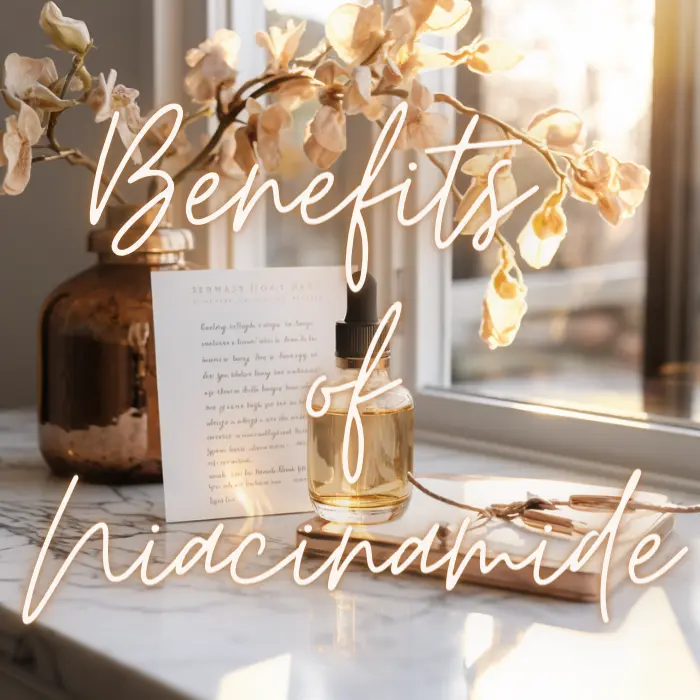
Niacinamide improves the skin barrier by:
- increasing its natural containing components;
- reducing transepidermal water loss (TEWL);
- increasing the skin’s resistance and response to damaging agents such as sodium lauryl sulfate (SLS) and dimethyl sulfoxide (DMSO);
- increasing its thickness;
- improving its integrity;
- boosting hydration.
Niacinamide is used to improve the stratum corneum barrier before starting retinoids. It eases retinization and enriches the results1.
To learn more, please read our Complete Guide on Niacinamide and How to Reduce Hyperpigmentation with Niacinamide.
Best Products for Skin Barrier Repair
Using the right products for your skin is essential. This one is difficult for the average consumer to achieve on their own. Your skin requires a balance of oil and water; topical products are excellent at maintaining that blend. But you have to know skincare ingredients and be able to tell which things the skin is lacking.
That’s why a knowledgeable skin therapist and/or dermatologist can make all the difference.
1. Real Barrier Extreme Cream
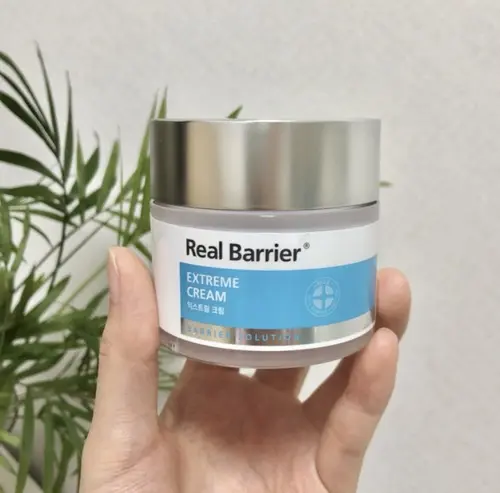
Real Barrier Extreme Cream helps rough and sensitive skin be silky and healthy without sticky residue. The ingredients aid in replenishing lost natural skin lipids to help support the skin’s protective barrier. The formula infuses skin-calming and soothing ingredients such as Panthenol, Allantoin, and Madecassoside.
It also has a patented Triple Ceramide, including “Omega-Ceramide,” that activates inner moisture components, making the skin firm and healthy. Please read the Real Barrier Extreme Cream Review.
Real Barrier Extreme Cream Ingredients List (last checked [current_year])
Water/Aqua, Caprylic/Capric Triglyceride, Butylene Glycol, Glycerin, Cetearyl Alcohol, Propanediol, Panthenol, Myristoyl/Palmitoyl Oxostearamide/Arachamide Mea, Glyceryl Stearate, Polyglyceryl 10 Distearate, Dimethicone, Sorbitan, Stearate, Viscum Album (Mistletoe) Fruit Extract, 1,2 Hexanediol, Limnanthes Alba (Meadowfoam) Seed Oil, Olea Europaea (Olive) Fruit Oil, Hydrogenated Vegetable Oil, Xylitylglucoside, Anhydroxylitol, Xylitol, Glucose, Tocopheryl Acetate, Phytosterols, Phospholipids, Dihydroxyisopropyl Palmoylpalmamide, Bis-Capryloyloxypalmitamido Isopropanol, Allantoin, Acetyl Heptapeptide 4, Helianthus Annuus (Sunflower) Seed Oil, Salvia Officinalis (Sage) Oil, Pogostemon Cablin Oil, Elettaria Cardamo Mum Seed Oil, Mentha Arvensis Leaf Oil, Anthemis Nobilis Flower Oil, Juniperus Mexicana Oil, Biosaccharide Gum 1, Sodium Hyaluronate, Acetyl Dipeptide 1 Cetyl Ester, Madecassoside, Stearic Acid, Carbomer, Caprylyl Glycol.
Ingredients referred from AtoPalm’s official website
Herbs Humectant/Moisturizing Active Fragrance
2. Purito Centella Unscented Recovery Cream
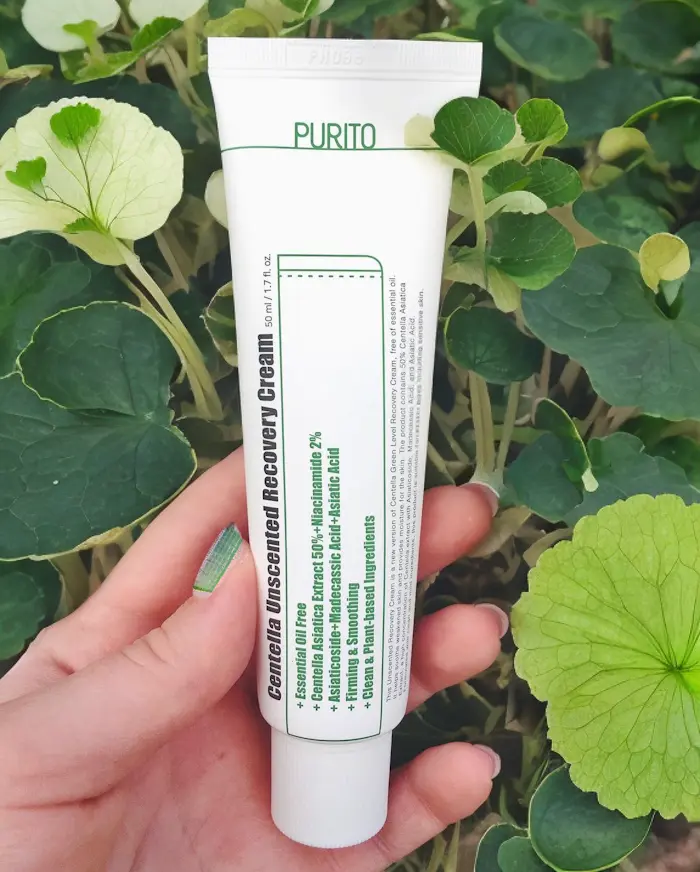
This Purito cream is chock full of skin barrier-friendly ingredients such as Centella Asiatica Extract, Adenosine, Asiaticoside, Ceramides, Madecassic Acid, and Niacinamide. It is soothing and calms redness. Please read the Purito Centella Unscented Recovery Cream Review.
Purito Centella Unscented Recovery Cream Ingredients List (last check [current_year])
Centella Asiatica Extract(50%), Water, Caprylic/Capric Triglyceride, Macadamia Ternifolia Seed Oil, Squalane, Butylene Glycol, Cetearyl Alcohol, Glycerin, Niacinamide, 1,2-Hexanediol, Potassium Cetyl Phosphate, Behenic Acid, Betaine, Tromethamine, Hydrogenated Lecithin, Butyrospermum Parkii (Shea) Butter, Palmitic Acid, Stearic Acid, Candida Bombicola/Glucose/Methyl Rapeseedate Ferment, Caprylyl Glycol, Oryza Sativa (Rice) Germ Oil, Cocos Nucifera (Coconut) Oil, Tremella Fuciformis (Mushroom) Extract, Sodium Hyaluronate, Perilla Ocymoides Seed Extract, Beta-Glucan, Carbomer, Xanthan Gum, Hydroxyethylcellulose, Sodium Carbomer, Adenosine, Asiaticoside, Asiatic Acid, Phytosphingosine, Ceramide NP, Madecassic Acid, Myristic Acid, Arachidic Acid.
Ingredients referred from the Purito Official Website
Herbs Humectant/Moisturizing Emollient Active Ferment
Final Words
I like to think of the skin as the world’s most sophisticated cosmetic chemist because this thin layer on the surface is such a simple yet effective formulation.
Imagine if a brand could formulate a serum that dissolved excess sebum, killed bacteria, kept the skin soft and pliable even in harsh environmental conditions, blocked the entry of viruses, and boosted the skin’s immune system! AKA did the skin barrier’s job. That product would crush it!
Most skincare products are formulated in part to mimic or replace the barrier. This protective film is driving an entire industry — it’s that important. I believe the starting point for any skincare regimen begins with supporting the barrier. Once the barrier is healthy and strong, other conditions, such as aging, acne, or redness, can be addressed.
All healthy skin begins with a healthy barrier, period.
Show Me Proof
- Oyetakin-White P, Suggs A, Koo B, Matsui MS, Yarosh D, Cooper KD, Baron ED. Does poor sleep quality affect skin aging? Clin Exp Dermatol. 2015 Jan;40(1):17-22. doi: 10.1111/ced.12455. Epub 2014 Sep 30. PMID: 25266053.
- Bissett D. Topical niacinamide and barrier enhancement. Cutis. 2002 Dec;70(6 Suppl):8-12; discussion 21-3. PMID: 12498532.
- Tanno O, Ota Y, Kitamura N, Katsube T, Inoue S. Nicotinamide increases biosynthesis of ceramides as well as other stratum corneum lipids to improve the epidermal permeability barrier. Br J Dermatol. 2000 Sep;143(3):524-31. doi: 10.1111/j.1365-2133.2000.03705.x. PMID: 10971324.
- Mohammed D, Crowther JM, Matts PJ, Hadgraft J, Lane ME. Influence of niacinamide containing formulations on the molecular and biophysical properties of the stratum corneum. Int J Pharm. 2013 Jan 30;441(1-2):192-201. doi: 10.1016/j.ijpharm.2012.11.043. Epub 2012 Dec 5. PMID: 23220080.
- Gehring W. Nicotinic acid/niacinamide and the skin. J Cosmet Dermatol. 2004 Apr;3(2):88-93. doi: 10.1111/j.1473-2130.2004.00115.x. PMID: 17147561.
- Christman JC, Fix DK, Lucus SC, Watson D, Desmier E, Wilkerson RJ, Fixler C. Two randomized, controlled, comparative studies of the stratum corneum integrity benefits of two cosmetic niacinamide/glycerin body moisturizers vs. conventional body moisturizers. J Drugs Dermatol. 2012 Jan;11(1):22-9. PMID: 22206073.
- Q Li, H Fang, E Dang, G Wang, The role of ceramides in skin homeostasis and inflammatory skin diseases, Journal of Dermatological Science, Volume 97, Issue 1, 2020, https://doi.org/10.1016/j.jdermsci.2019.12.002.
- Coderch, L., López, O., de la Maza, A. et al. Ceramides and Skin Function. Am J Clin Dermatol 4, 107–129 (2003). https://doi.org/10.2165/00128071-200304020-00004
- Uchida Y. Ceramide signaling in mammalian epidermis. Biochim Biophys Acta. 2014 Mar;1841(3):453-62. doi: 10.1016/j.bbalip.2013.09.003. Epub 2013 Sep 19. PMID: 24055887; PMCID: PMC3943494.
- Cha, H. J., He, C., Zhao, H., Dong, Y., An, I., An, S.”Intercellular and intracellular functions of ceramides and their metabolites in skin (Review)“. International Journal of Molecular Medicine 38, no. 1 (2016): 16-22. https://doi.org/10.3892/ijmm.2016.2600
- S Kwak, E Brief, D Langlais, N Kitson, M Lafleur, J Thewalt, Ethanol perturbs lipid organization in models of stratum corneum membranes: An investigation combining differential scanning calorimetry, infrared and 2H NMR spectroscopy, Biochimica et Biophysica Acta (BBA) – Biomembranes, Volume 1818, Issue 5, 2012, https://doi.org/10.1016/j.bbamem.2012.02.013
- Puri N, Talwar A. The efficacy of silicone gel for the treatment of hypertrophic scars and keloids. J Cutan Aesthet Surg. 2009 Jul;2(2):104-6. doi: 10.4103/0974-2077.58527. PMID: 20808600; PMCID: PMC2918339.
- Harris-Tryon, Tamia A., and Elizabeth A. Grice. “Microbiota and maintenance of skin barrier function.” Science 376, no. 6596 (2022): 940-945.
- Boxberger, Manon, Valérie Cenizo, Nadim Cassir, and Bernard La Scola. “Challenges in exploring and manipulating the human skin microbiome.” Microbiome 9 (2021): 1-14.

